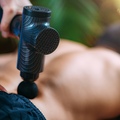
By Dr. Kyla Nelson
Adhesive capsulitis, more commonly known as “frozen shoulder” is a painful shoulder condition in which shoulder mobility becomes severely restricted. This condition occurs when the shoulder capsule tightens around the ligaments and tendons in the shoulder.
Risk Factors include:
- Diabetes (Type 1 or 2)
- Hypothyroidism or hyperthyroidism
- Female between 40-65 years old
- Previous history of frozen shoulder on the opposite shoulder
- Immobilization
- Trauma
- Autoimmune disease
Frozen Shoulder is typically broken down into 3 stages
- Freezing Stage –. Characterized by gradual, progressive shoulder pain that lasts 3 to 9 months. Early loss of external rotation is observed, followed by limitations in all shoulder movements.
- Frozen Stage – characterized by generalized shoulder pain and limited mobility lasting up to 9 to 15 months. During this stage the pain may start to subside.
- Thawing Stage – shoulder pain continues to resolve and shoulder mobility improves.
Overall the course of frozen shoulder can last up to 12-18 months.
Conservative Treatment Options
- Heat, electrical stimulation and acupuncture for pain relief
- Joint mobilizations (low-moderate intensity)
- Patient education – postural advice and activity modifications to reduce the strain placed on the injured tissues
- Passive range of motion exercises in pain-free ranges
- Progressive stretching and strengthening program
There are a number of differential diagnoses that may initially present similar to frozen shoulder, such as sprain/strain of shoulder musculature/joint or rotator cuff tendinopathy. If you think you may have a frozen shoulder ensure that you see a health care practitioner promptly for a proper evaluation and diagnosis.
References
Kelley, Martin J., et al. “Shoulder pain and mobility deficits: adhesive capsulitis: clinical practice guidelines linked to the International Classification of Functioning, Disability, and Health from the Orthopaedic Section of the American Physical Therapy Association.” Journal of Orthopaedic & Sports Physical Therapy 43.5 (2013): A1-A31.

Admin
Contact Me


